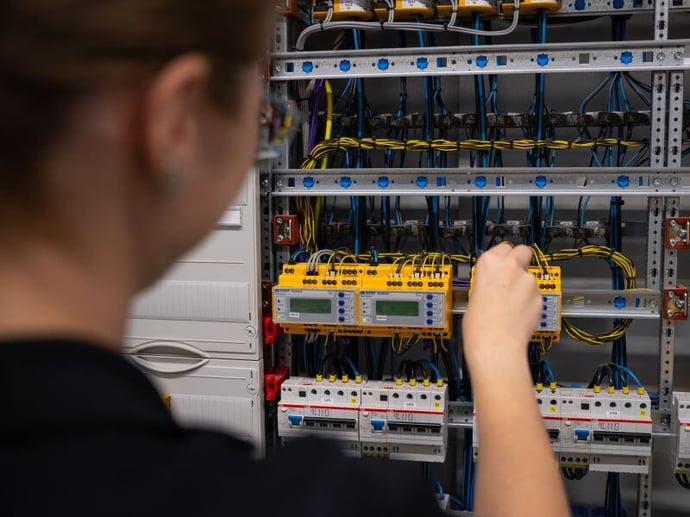What keeps the world's sixth-largest steel mill running?
In steelworks, machines and plants have to run around the clock - 24/7/365. If they fail, it quickly becomes expensive. Especially in the case of continuously producing large-scale plants, the downtime costs per hour can quickly reach dizzying heights. Therefore, causes of failure must be found quickly and eliminated immediately. However, this is often not so easy with complex systems with various drives. Especially if the fault is in the electrical system.
Repeated failures of roller table motors were the reason for JSW Steel to call the Bender experts. At the world's sixth-largest steelworks in Ballari, southern India, persistent faults in a multi-axis system and in certain stationary motor drives could not be tackled. The Bender specialists developed two different troubleshooting concepts for the two tricky cases. With clear success, because the plant downtimes at JSW Steel caused by electrical faults have been significantly reduced. (Read the full story here).
So what can be done to prevent short circuits and failures in the first place? In this article you will learn how faults in the electrical IT system, mostly classic insulation faults, can be detected quickly and safely before machines come to a standstill and costs are incurred.
Follow this link to learn more about IT systems!
More reliability of operation with IT systems
Wherever the power supply must not be interrupted under any circumstances, an IT system is the first choice for power supply. Because unearthed systems make something possible that no other power supply system can: Even if the first insulation fault occurs, the system simply continues to run and there is enough time to find and correct the fault. This is perfect for all continuously running industrial plants, because machine downtimes due to insulation faults are theoretically a thing of the past.
What if it gets complicated?
But what is it like in everyday practice? The fact that insulation fault location works very well is demonstrated time and again by Bender's experts, who also develop customised insulation monitoring and fault location systems for complex large-scale systems. The goal here: Locate insulation faults at an early stage and eliminate them immediately. Depending on the type of system, sometimes the installation of an insulation monitoring device is sufficient, sometimes an entire ISOMETER® network must be set up. Bender ISOMETER® from the iso685 series, which are suitable for AC, DC and AC/DC systems, are often used in converter applications and large industrial plants.
Less costs, more protection for man and machine
Insulation monitoring with a customised insulation fault location system is usually a win-win situation with manageable investments and great savings potential. How you benefit:
- The system reliably detects insulation faults and increases reliability of operation.
- Installation costs are low compared to system downtime costs.
- The system detects and locates insulation faults during system operation.
- Even at the first insulation fault, the system does not have to be switched off.
- Permanent insulation monitoring reduces the risk of fire.
What about in your plant?
No matter whether in the steel or chemical plant, in glass production or paper manufacturing and in other industries where continuous production is required: The secure availability of electricity is essential. The well thought-out insulation fault location system is an easy way to ensure this. Read more about how we ensure high availability in data centers in this article.



